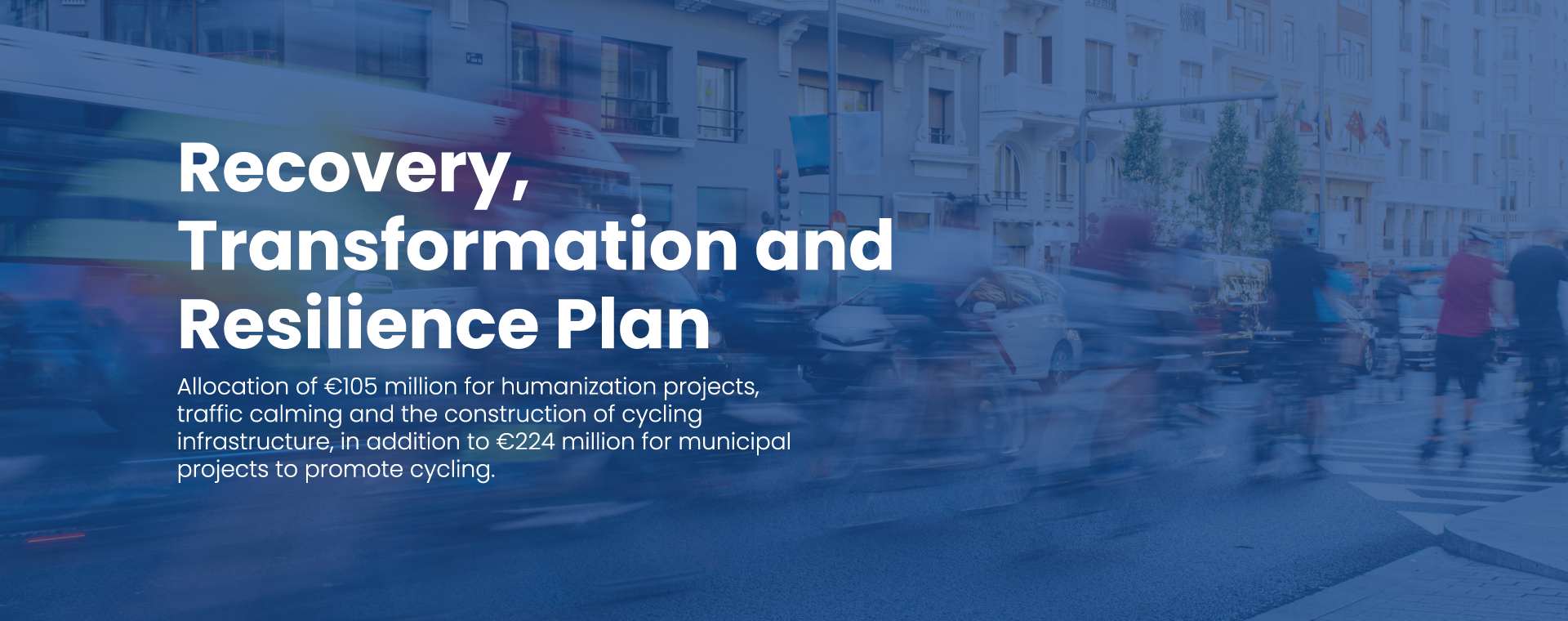

WHAT MEANS INECO IMPULSA?
The new Ineco Impulsa space was created with the aim of becoming a benchmark for knowledge and trends. A new lever to anticipate and transform the future of mobility and digital transformation and help face the major social, economic and environmental challenges facing us as an organisation and society.
Ineco Impulsa will become a key tool for Ineco to identify opportunities and threats in an increasingly changing and dynamic environment and to contribute to a robust and reliable discussion framework.
A window to share the knowledge of our professionals.

BICYCLES IN THE CITY
In a scenario where mobility is understood as a right and an element of social cohesion, the promotion of cycling mobility acquires a fundamental role. The bicycle is called to play a major role in the mobility of cities. An agile and efficient mode, especially for daily urban trips of less than 10 km.
Ineco, a player in the definition of urban mobility strategies, analyses the situation and the challenges facing the sector, in line with current public mobility policies and the increased promotion of bicycles as a means of transportation.
According to data from the 2019 Bicycle Barometer, 71.8% of Spaniards have at least one bicycle in their household and 20 million Spaniards use bicycles "with some frequency". Infact, in 2021, more than 1.5 million bicycles were sold in Spain (25% more than in 2019) with a turnover of almost €2.9 million, nearly 54% more than in 2019.

The best cities in the world for cycling have between 3 and 20 kilometers of bike lanes per 10,000 inhabitants and between 10% and 50% of commuters use this mode of transport. In Spain, only 7 cities have more than 2 kilometers of bicycle lanes per 10,000 inhabitants. Barcelona and Seville are the only two cities that have at some point been ranked among the top 20 friendliest cities globally for cycling mobility.
Are Spanish cities ready?

The challenge: to achieve an average modal share of 10 % by 2030
To meet this challenge, infrastructure is a key element, but so are bike-sharing systems, the adaptation of regulations to promote cycling mobility and progress towards more sustainable urban planning.
There are a number of actions that can be undertaken in many areas involved in cycling mobility:
- Development of quality cycling infrastructure
- Commitment to public bicycle services
- Optimisation of road safety, with special emphasis on cyclists and pedestrians.
- Sustainable urban planning with bicycle-friendly spaces.
- Promotion, training and awareness to break down barriers.
- The promotion of the bicycle as an alternative to urban goods delivery.


















